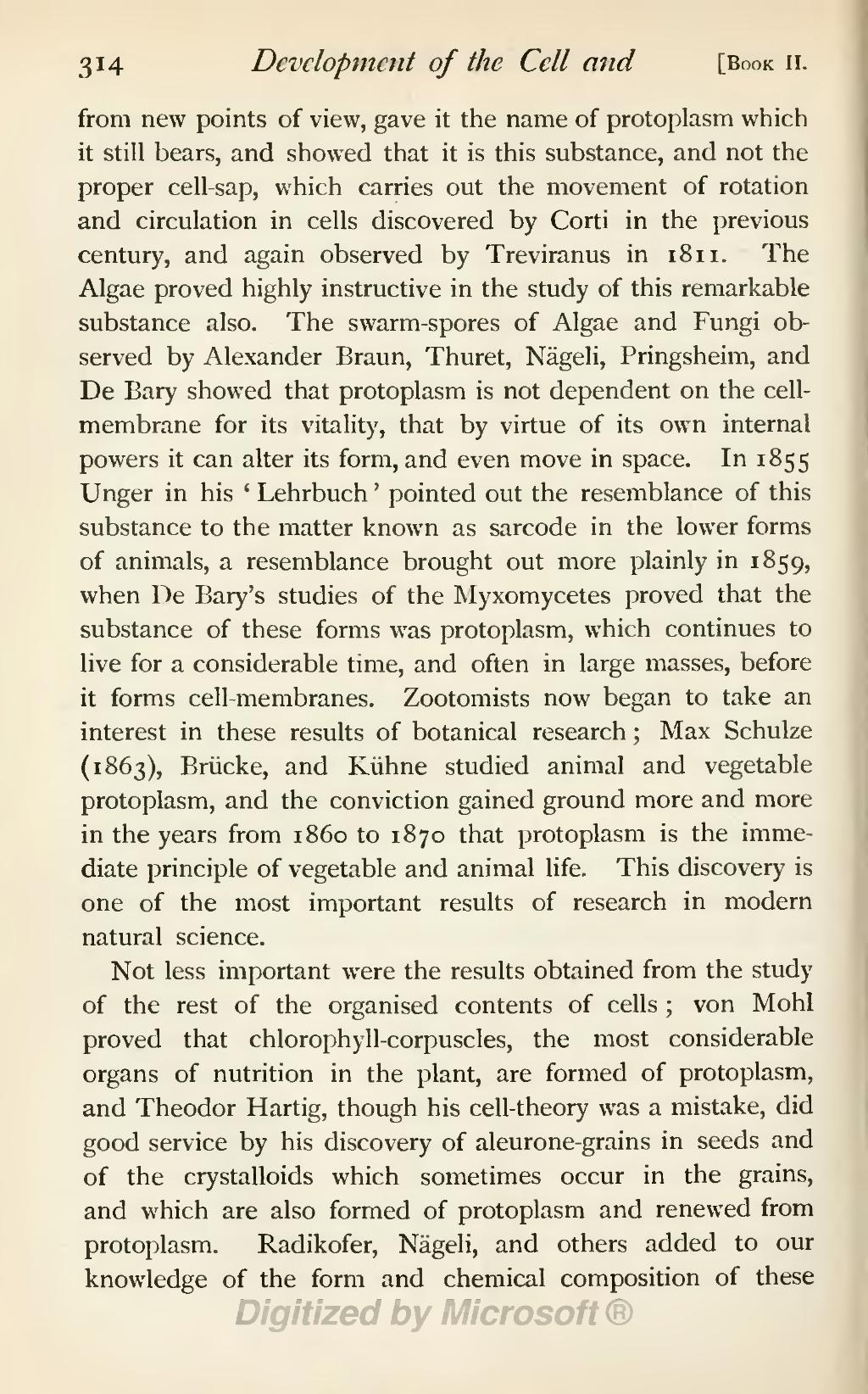from new points of view, gave it the name of protoplasm which
it still bears, and showed that it is this substance, and not the
proper cell-sap, which carries out the movement of rotation
and circulation in cells discovered by Corti in the previous
century, and again observed by Treviranus in 1811. The
Algae proved highly instructive in the study of this remarkable
substance also. The swarm-spores of Algae and Fungi observed by Alexander Braun, Thuret, Nageli, Pringsheim, and
De Bary showed that protoplasm is not dependent on the cell-membrane for its vitality, that by virtue of its own internal
powers it can alter its form, and even move in space. In 1855
Unger in his 'Lehrbuch' pointed out the resemblance of this
substance to the matter known as sarcode in the lower forms
of animals, a resemblance brought out more plainly in 1859,
when De Bary's studies of the Myxomycetes proved that the
substance of these forms was protoplasm, which continues to
live for a considerable time, and often in large masses, before
it forms cell-membranes. Zootomists now began to take an
interest in these results of botanical research ; Max Schulze
(1863), Briicke, and Kiihne studied animal and vegetable
protoplasm, and the conviction gained ground more and more
in the years from 1860 to 1870 that protoplasm is the immediate principle of vegetable and animal life. This discovery is
one of the most important results of research in modern
natural science.
Not less important were the results obtained from the study of the rest of the organised contents of cells; von Mohl proved that chlorophyll-corpuscles, the most considerable organs of nutrition in the plant, are formed of protoplasm, and Theodor Hartig, though his cell-theory was a mistake, did good service by his discovery of aleurone-grains in seeds and of the crystalloids which sometimes occur in the grains, and which are also formed of protoplasm and renewed from protoplasm. Radikofer, Nägeli, and others added to our knowledge of the form and chemical composition of these
